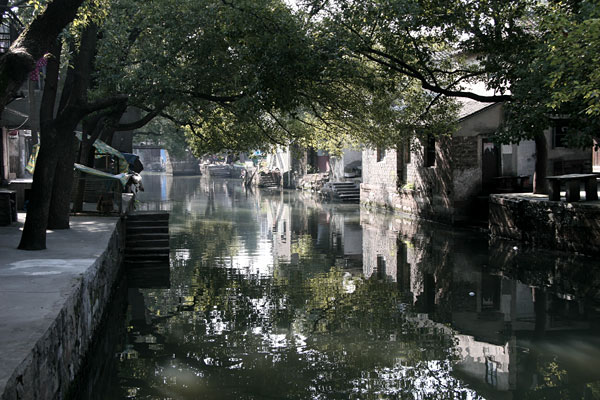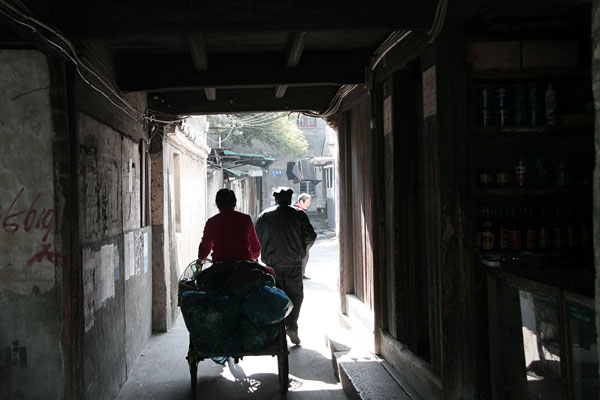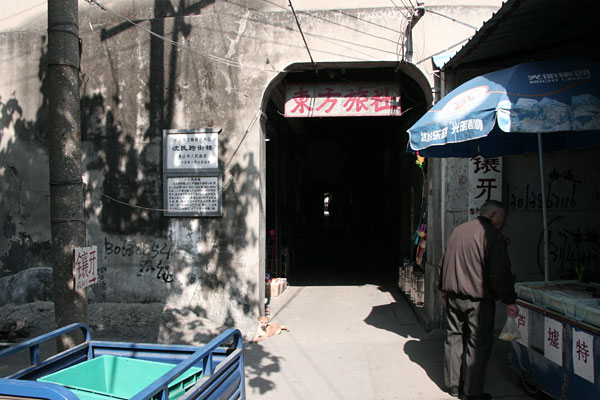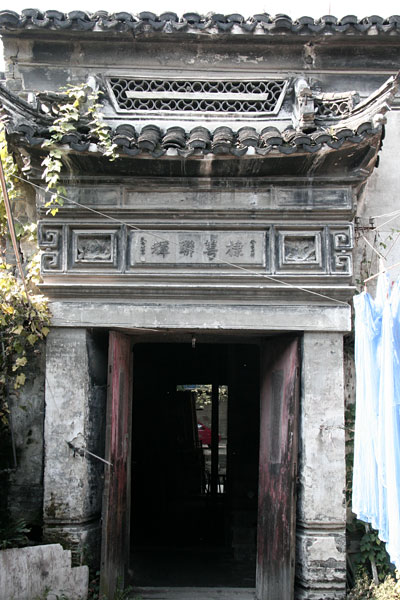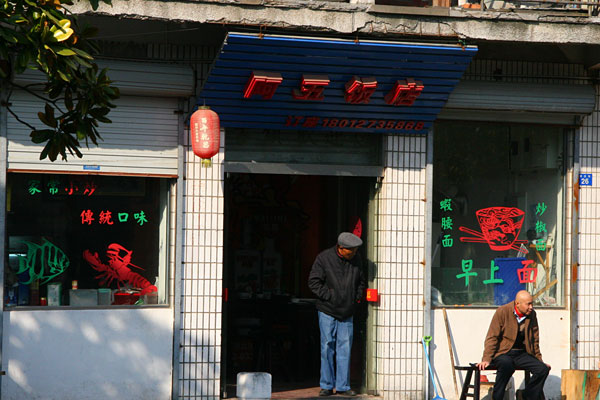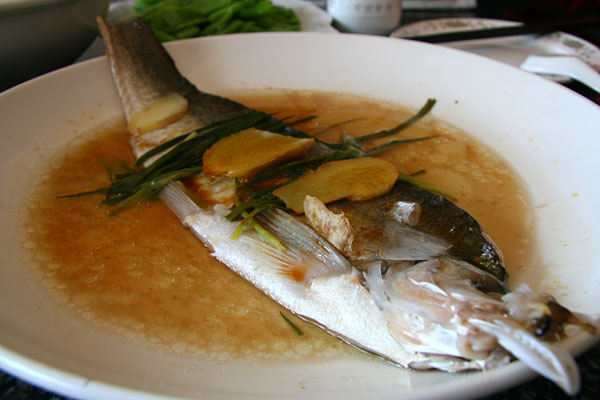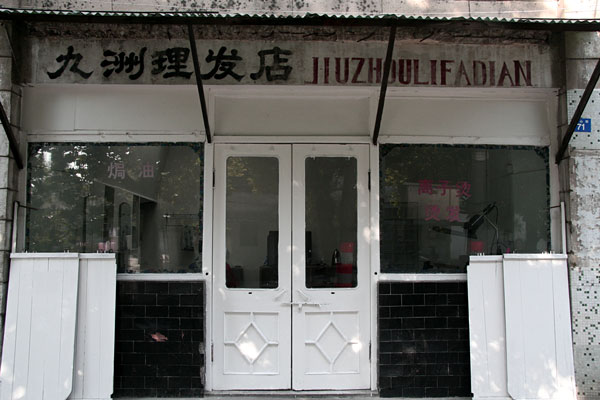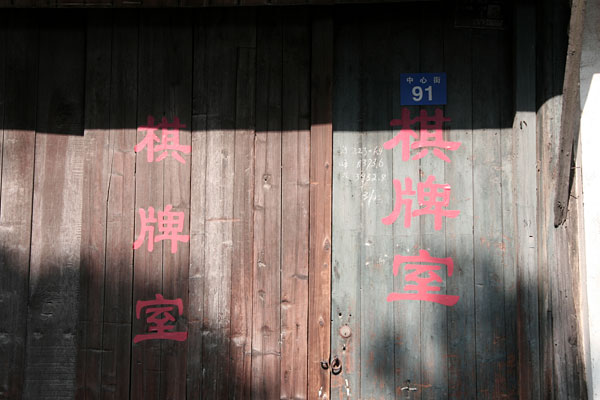
After stops at Wuzhen, Xitang, Luxu and Lili we arrived at yet another ancient waterfront town of Tongli, renowned for its UNESCO World Heritage Site. This would be our base for the next two nights, where we’re checking into our most anticipated hotel of our 17-day journey.
By this time we’ve already stayed in some very unique guesthouses: the 130-year-old Songhetang in Hongcun and the 500-year-old Shendetang in Xitang among them. If you’re the sort of adventurous traveler who appreciates staying in a Ryokan in Japan or a Gite in France, you’ll also love the Qing Dynasty luxury in this 350-year-old traditional Chinese inn.
Hotel Review: JINGYITANG (Tongli)
Address: Fuguan Jie 5, Tongli
Price: RMB 280
Website: Official Site (in Chinese)
How To Book: Walk in, or call them at 13913070530 in Chinese.
Directions: Go to the "Three Bridges" area at the centre of town. The entrance of Jingyitang is a little private alley running north-south perpendicular to the canal. Ask the local shopkeepers to point you to the right door when you get there.

Built in the 2nd year of Emperor Kangxi, or Year 1662 in the Western World, Jingyitang was the office of a Qing Dynasty scholar-bureaucrat now converted into a traditional guesthouse, or Kezhan as locally known. In the rest of the world, France was about to enter its golden age under Louis XIV and the Ottoman Empire enjoyed its greatest expansion into Europe. Here in our remote little town of Tongli, the Emperor’s appointed engineer for waterworks infrastructure set up his office in this courtyard mansion.

A prototypical scholar’s mansion in this historic region of Jiangnan, or South of the Yangtze River, Jingyitang was designed as a narrow and deep complex of living quarters flanking a series of central courtyards. Over the centuries the outer quarters have been either sold off or confisticated by the socialist government and redistributed to poorer peasants, with only the innermost section remaining with the original descendants and eventually becoming the guesthouse of today.

Today the complex is owned by two modern descendants of the town’s powerful Wang clan, operating a guesthouse in the front quarters and retaining the back for their own private use. Pictured is Mr. Wang Peng sitting in his elegant greeting hall, working on the ledgers of the guesthouse in the early morning. The guy is also a quite a good cook, as we will see.
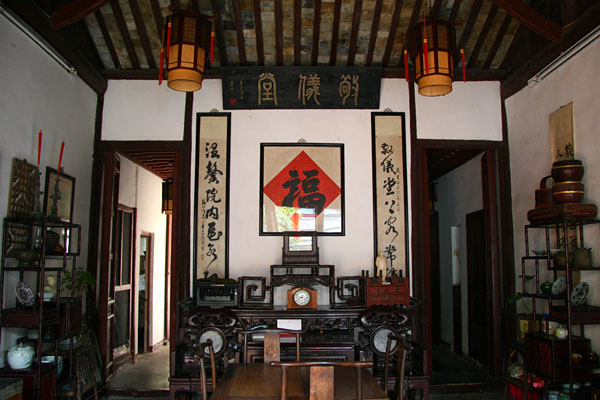
The historic greeting hall still serves its original functions of welcoming faraway guests and hosting dinners in the evening, in addition to wowing its visitors with some beautifully carved door panes, Qing Dynasty calligraphy scrolls and the owners’ collection of antique ceramics. It’s easy to forget that this wasn’t a museum, but someone’s living room.

But nothing prepared us for the entrance into our Qing Dynasty bedroom known as the Xixiangfang, or West Suite. This might have been the best RMB 280 (CAD$44) per night that we had ever spent in any country. After pushing open a set of heavy, creaky wooden doors that must have been a couple centuries old, we were led into our own private greeting room with its own antique furniture pieces and decorative calligraphy, as well as a study desk facing the windows.

To give a sense of how spacious this suite was, the greeting room alone was about the size of a 4-star hotel room I've had in Tokyo. The bedroom itself stood beyond a series of floor-to-ceiling door panels, the airy windows led to a serene view of the central courtyard and the guesthouse’s impressive main greeting hall. This was easily the best room in the house.
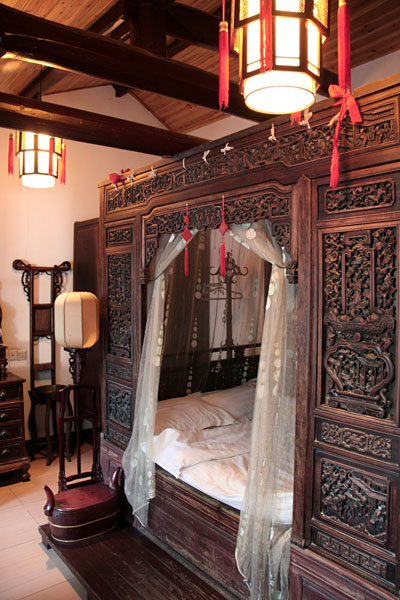
The bedroom was absolutely the stuff of fantasies -- we’re practically inside a museum of Qing Dynasty furniture pieces, except that we could touch, recline on and sleep inside the exhibits. Everything from the magnificent bed frame to the dresser table of dark rosewood to the flimsy standalone washbasin seemed to have come right out of an exotic movie set. We must have spent hours exploring every unimaginable detail in these 200-year-old artifacts that told the stories of the cultured scholars who once lived in these quarters.

Look at the exquisite craftsmanship in these intricate figurines telling the story of an Imperial official’s parade at just one little corner of our bed ... these scholar-bureaucrats knew how to live! While we also slept in one of these antique Eastern Chinese box beds at our guesthouse in Xitang, that still wasn’t quite as extraordinary as this museum-worthy piece of folk art.
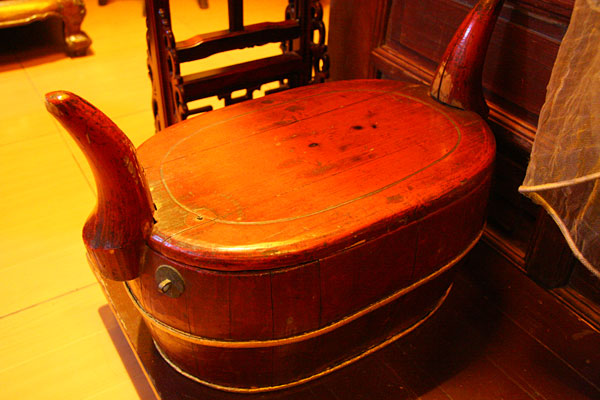
At least I knew what to do with a bed ... but what about this exotic red box on the bedside with these evil-looking horns jutting out of it? Luckily one of the Mr. Wangs showed up to explain that this was merely a Qing Dynasty shoe cabinet for storing one’s odorous shoes at bedtime. It was too small for our modern hiking boots of course, and I ended up using it as a bedside table for the alarm clock.

But I definitely wouldn’t use this Qing Dynasty toilet bowl, now rendered as an object of decor in the greeting room ... besides this was a child-sized version anyway.
Aside from all its antique furnishing, our room also came with modern necessities such as a Western style toilet in a private bathroom, air-conditioning, TV, and wireless internet connection. Our two-night stay here was definitely the most memorable of our trip to Eastern China, and I have no hesitation recommending this place as an informal guesthouse so long as you don’t expect spotless cleanliness in a 350-year-old room. You could also pay a little extra like we did and turn the whole stay into a bed-and-breakfast or even half-board experience.
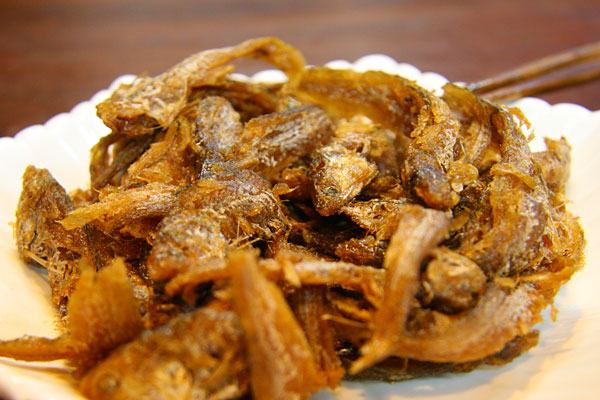
Dinner was served among the ancient calligraphy and priceless antiques in the aforementioned greeting hall, which was only large enough for about three tables. Hence it’s best to pre-order the dinner before heading out in the morning, which reserves a table as well as allowing for selection of the more time-consuming slow-cooked dishes. Our dinner started with these Smoked Small Fishes (Xiao Xunyu), which were drier and crispier than the typical round steaks of Shanghainese Smoked Fish that I’m used to. The flavor was on the sugary side as you would expect of most cold appetizers in this region, and was quite decent as a starter.

Tongli’s proximity to China’s largest freshwater lake brings to the dinner table a large variety of fresh fish and crustaceans, the most famous being the so-called "Three Whites of Lake Tai": White Fish (Baishuiyu), White Shrimps, and Whitebait. On this night we ordered the local version of Scrambled Eggs with Whitebait, a standard peasant dish you’d find along the entire Southeastern Chinese coast from Shanghai to Hong Kong. The whitebait tasted pretty standard, but the eggs did taste of a slight free-range flavor which would be harder to find in the big cities. While it was nowhere as miraculous as the free-range eggs we had in Hongcun a week ago, it would still beat the Cantonese version of this dish served in most Hong Kong restaurants.

But the definite best dish of the night were theses Oil-Braised Manchurian Wild Rice Stems (Youmen Jiaobai), a vegetable that seems quite common in Eastern China and nowhere else in the country. The classic combination of crispy wild rice stems with the slightly caramelized glaze of cane sugar and dark soy sauce was just too good. These fresh ingredients and simple flavors really embody peasant cooking at its best.
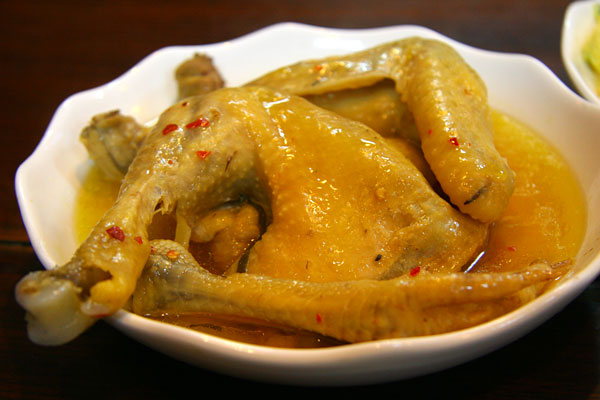
As I mentioned Mr. Wang himself was quite a decent cook, and when we pre-ordered our dinner he recommended that we try his proudest creation -- Slow-Simmered Free-Range Chicken (Dun Tuji). This was half a bird, lightly seasoned and slowly steamed for hours and hours until the meat became fall-off-the-bones tender. The focus of the dish wasn’t the seasoning of course, but the slight gameyness in the free-range bird. My wife loved this dish, and I thought it was the second best dish of the evening after the wild rice stems.

I was pleasantly surprised with the fair prices as well as the quality of food in this guesthouse, compared to the usually less-than-stellar restaurants in many family-run hotels. And while breakfast wasn’t included in the room price, for RMB 6 more Mr. Wang would get the neighboring Wonton lady to deliver a bowl of fresh Wonton (or more properly, Huntun) with a soft boiled egg into the guesthouse. There’s hardly a more relaxing spot for breakfast than sitting in the private garden of a stately mansion from a bygone era.
Dinner Bill for Two Persons
| Smoke Small Fishes | RMB 20 |
| Scrambled Eggs with Whitebait | RMB 30 |
| Oil-Braised Manchurian Wild Rice Stems | RMB 15 |
| Slow-Simmered Free-Range Chicken | RMB 28 |
| Rice x 2 | RMB 4 |
| TOTAL | RMB 97 (CAD$15.4) |
Aside from dining at our guesthouse we took the advices from the Chinese visitors and tried two other eateries, both of which turned out to be pretty good value.
Food Review: JIUTANZI FANTONG (Tongli)
Address: Zhuxing Jie 13, Tongli
Hours: 11:00 – 21:00 (unofficial; based on observation)
Website/Map: Map from Baidu
Directions: Start from the town's main entrance (ie. the broad stone bridge). Facing the town, turn left into the first pedestrian street. The restaurant is about 50m down the street on the left hand side.

This is a hidden gem among Tongli's countless overcharging teahouses and restaurants. Walk into any other canal-side teahouse and you'll see what a bargain this place is -- instead of RMB 50 per person for tea alone, for the same price we had a seafood dinner complete with wine and beer.
Okay ... it's not technically seafood, but riverfood selected from the local region's abundance of freshwater produce. Jiutanzi Fantong is famous among budget-conscious Chinese travelers seeking authentic local flavors at reasonable prices, and of course its prime location on the canal doesn't hurt. There are no English menus, but who needs them when it's just as easy to glance at the next table to see what everyone else orders?
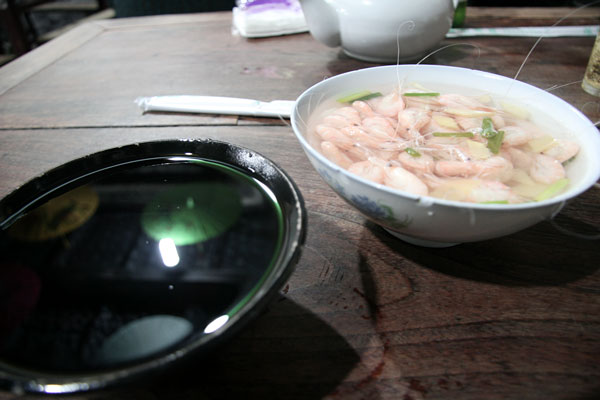
This was one of those really traditional eateries with square wooden tables that could be used for mahjong, crude wooden benches you'd see in Chinese martial arts films, and giant vats of nameless rice wines on tap. Local beers were already cheap at RMB 6, but an even better deal was the house premium yellow wine (Youhuang) that came in an intimidatingly large bowl for only RMB 9. This was perfect to go with the several snack sized dishes we ordered.

Our most expensive dish of the night was an appetizer featuring one of Three Whites of Lake Tai hailed by local gourmands. This impossibly plain dish of White Shrimp in Brine (Yanshui Baixia) was as simple as it looks -- small, plump freshwater shrimps boiled in a light brine, with nothing but green scallions and ginger to accentuate the sweetness in the meat. While the shrimp wasn't anything extraordinary, I definitely had no complaints about a RMB 35 (CAD$5.5) order of shrimp, especially in a waterfront restaurant in a tourist town.

As if RMB 35 wasn't cheap enough for shrimp, they also offered these Stuffed Lotus Roots with Pureed Shrimp (Xiarou Oubing) for the rock bottom price of RMB 18 (RMB 2.9). Granted there's only enough shrimp to fill those little holes inside the lotus roots, but the promise of shrimp alone seemed to put this rustic Eastern Chinese dish on virtually every table in the house. I guess this was the local version of onion rings in a pub -- a greasy snack to go down with the blue-collar favorite of yellow wine.

For more local flavors we ordered this plate of Stir-Fried Water Caltrops with Edamame Beans ... or Maodou Beans as they're known in China. This was actually my first time having water caltrops in the cooked form (as opposed to the peanut-like texture of raw water caltrops), and they turned out to be an great palate cleanser after those deep-fried lotus roots.
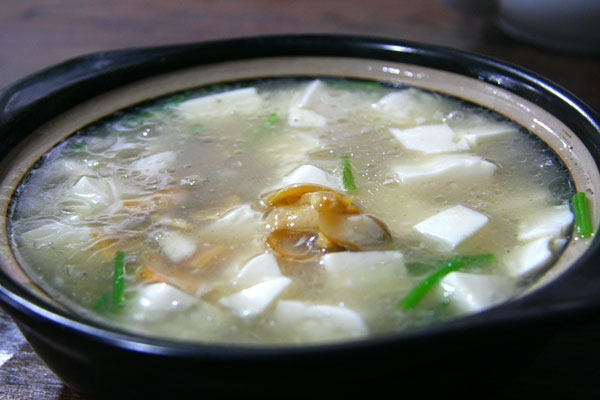
It was time to wrap up our dinner with some comfort food. This delicious pot of River Clams with Tofu in Broth turned out to be the best dish of the evening -- the clams were fresh, the tofu was silken smooth, and the thick broth was excellent as a clear sauce over plain rice. And best of all, this was also the cheapest dish at only RMB 18.
Even after four courses, a local beer and a large bowl of yellow wine, this meal still ended up being one of our cheaper dinner over four nights in the ancients towns of Wuzhen, Xitang and Tongli. If you're traveling to Tongli and want an authentic local eatery at a reasonable price, this would be my recommendation.
Bill for Two Persons
| White Shrimp in Brine | RMB 35 |
| Stuffed Lotus Root with Pureed Shrimp | RMB 18 |
| Stir-Fried Water Caltrops with Edamame Beans | RMB 20 |
| River Clams with Tofu in Broth | RMB 18 |
| House Yellow Wine | RMB 9 |
| Local Beer | RMB 6 |
| Rice x 2 | RMB 2 |
| TOTAL | RMB 108 (CAD$17.1) |
But if you're pressed for time and need a quick meal between Tongli's many lovely gardens, perhaps a noodle house would suit your requirement better ...
Food Review: CHUNGUAN MIANFANDIAN (Tongli)
Address: Shentian Jie 215, Tongli
Hours: 11:00 – 20:00 (unofficial; based on observation)
Website/Map: Map from Baidu
Directions: Stand outside the main entrance of Tuisi Garden. Facing the square, Chunguan Mianfandian is immediately on the left hand side.
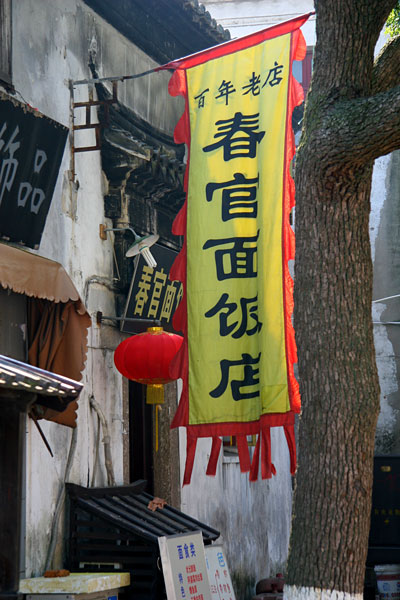
As "hole-in-the-wall" as this unassuming noodle house may appear, it's been a Tongli institution for decades, due at least in part to its prime location next to the top attraction in town. Prices are slightly higher compared to similar noodle houses in Suzhou, but still cheaper than most places in expensive Tongli. RMB 18 (CAD$2.9) buys you a hearty bowl of noodles with regional specialties such as Pork Knuckles, Deep-Fried Fish Fillet or Sliced Eels. And if you're really on a tight budget, RMB 12 (CAD$1.9) buys you the regular noodles with sliced pork or mixed veggies. That's about as cheap as it goes for a filling lunch in this tourist town.

The noodles here are a little wider than the extremely thin variety that Suzhou is famous for, and was only slightly chewy. Even though the soup was nothing spectacular, this Deep-Fried Fish Fillet was pretty good ... and would have been better if only the portion was larger.

Tongli's version of the ubiquitous Red-Braised Pork Knuckles, promoted in this town as Zhuangyuanti (Top Scholar's Knuckles), tasted remarkably similar to Xitang's version. For those who don't mind the layer of fat -- and you really shouldn't order pork knuckles anywhere in the world if you do -- the combination of fat and lean meat should be tasty enough for any carnivorous man. Again the portion was too small to fully satisfy, and larger groups should probably order a whole knuckle for RMB 50 to share. But for the two of us, we really couldn't complain about RMB 36 for lunch at a town where teahouses charge RMB 50 per person for tea.
Bill for Two Persons
| Noodles with Deep-Fried Fish Fillet | RMB 18 |
| Noodles with Pork Knuckle | RMB 18 |
| TOTAL | RMB 36 (CAD$5.7) |


